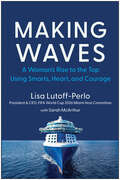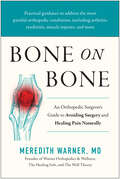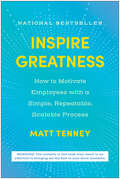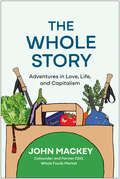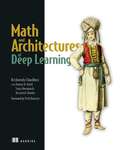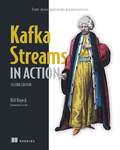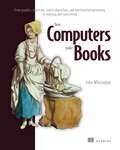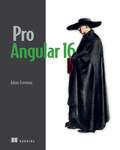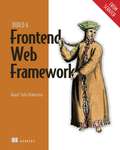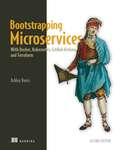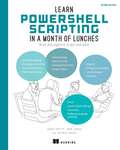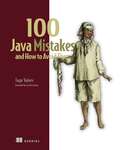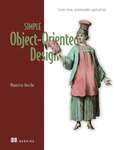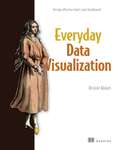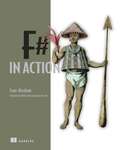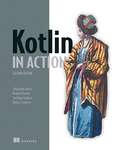- Table View
- List View
Crossing the Desert: The Power of Embracing Life's Difficult Journeys
by Payam ZamaniAt the age of 16, he escaped persecution and made his way to America as a refugee. At 28, he secured a billion-dollar IPO. Today, he&’s redefining what it means to be an entrepreneur by building a new model of capitalism.In the summer of 1987, Payam Zamani fled Iran. As a member of the Baha&’i Faith, he had already survived years of religious persecution at the hands of Islamic fundamentalists. Taking the only path available to him, he escaped to Pakistan through the Emptiness Desert: a harrowing five-day trek through one of the hottest, driest, and most hostile regions on the planet.Twelve years later, he and his brother set records when the company they founded hit a $1.2 billion valuation on Wall Street. He was rich—on paper. But in the wake of yet another Wall Street meltdown, he learned the hard way that modern capitalism can be harmful to the human soul.In 2015, Payam set the example he wanted to see by merging his business acumen with his spiritual beliefs and founding a new company—One Planet Group—this time without letting Wall Street or the venture capital world dictate the terms. Today, One Planet Group is proving that it&’s not only possible but necessary to build strong businesses while taking care of our employees, customers, communities, and the planet.Crossing the Desert gives readers an intimate look at how the paths we choose, the values we embrace, and the systems we decide to participate in (or not) can make or break us, not only financially, but spiritually. Payam&’s story is a timely reminder that enduring and embracing life&’s most difficult journeys can lead us to a brighter future—not only for ourselves, but for the people around us, and even the world.
Making Waves: A Woman's Rise to the Top Using Smarts, Heart, and Courage
by Lisa Lutoff-PerloFollow the incredible career journey of Lisa Lutoff-Perlo, from her stories as an ambitious young woman to President and CEO of Celebrity Cruises to Vice Chairman for External Affairs at Royal Caribbean Group.A shining testament to the value of being an authentic leader and never sacrificing your integrity, Lutoff-Perlo details the ins and outs of her extraordinary 40-year career. She has risen to the top in a male-dominated industry, while refusing to compromise her values and bringing countless others along with her. Along the way, she ultimately transformed and redefined relaxed luxury cruising with the launch of the bold, innovative Edge Series ships in 2018, which drove unprecedented demand for Celebrity Cruises and propelled the brand&’s financial performance. She climbed the corporate ladder from the very bottom and overcame countless obstacles to reach the top of the cruise industry.In Making Waves, Lutoff-Perlo walks readers through her triumphs, hardships, and learning moments. She breaks down her unique leadership style as the first woman to take the helm as President & CEO of one of the Royal Caribbean Group&’s brands that catapulted Celebrity Cruises to heights no one thought possible, simply by caring deeply for people and putting others first. Readers will learn how she used her superpowers to set herself apart from other leaders—leaving guests and employees in awe of her authenticity and kindness. Individuals from all walks of life will take heart and gain insights they can apply to their own lives and careers: to have integrity, to pay it forward, and to make waves, wherever and whoever they are.
The Hacker Mindset: A 5-Step Methodology for Cracking the System and Achieving Your Dreams
by Garrett GeeFor the countless people feeling trapped in their jobs and whose talents aren&’t being fully utilized, this book offers a wake-up call to break free from the constraints of ordinary employment and achieve true financial freedom.When boy genius Garrett Gee started working for the federal government at age 15, he figured fame and fortune were only a stone&’s throw away. Despite impressive credentials and enormous potential in the world of computer hacking, Gee found himself years later as just another salaried employee. He soon realized that though he was a hacker at work, he was a slacker when it came to leading his own life. But as soon as he applied his meticulous hacker mindset to his personal life, everything changed—and success rolled in quickly.Those who feel unfulfilled and stuck in the system, unable to realize their dreams as their careers merely bump along, can use this same hacker mindset in any situation or industry to overcome obstacles and identify the quickest path to true success—a success they can define for themselves. Drawing on decades of experience in cybersecurity, Gee outlines our innate hacker abilities in the face of society&’s best efforts to brainwash us to be slackers, and he offers readers practical advice alongside the six principles of the hacker mindset:Be on OffenseReverse EngineeringLiving Off the LandRiskSocial EngineeringPivot For anyone seeking to ascend the corporate ladder, leave their job to start their own business, or obtain greater freedom in their life, The Hacker Mindset is an essential guide to hacking established systems in any sphere and unlocking one&’s fullest potential.
Burned: How Business Owners Can Overcome Burnout and Fuel Success
by Julie BeeA step-by-step, practical guide for business owners to overcome, prevent, and leverage burnout in ways that fuel their growth and success.Burnout is an epidemic in the business owner community, and the guidance to overcome it by taking a vacation, getting more exercise, and incorporating meditation into their days isn&’t the advice they need.During more than 15 years as a business owner and leader, Julie Bee has experienced firsthand this unique struggle—one that often requires that they continue working while overcoming their burnout. With this comprehensive guide, Bee helps readers:Understand the three types and two cycles of burnout, and learn how to identify signs of each in yourselfMake space for addressing burnout, especially when taking a break isn&’t an optionFix any problems your burnout causes in your business and/or personal lifeRecover from burnout and prevent it from recurring Leverage breakthroughs uncovered in the process of dealing with burnoutReady to transform your struggle into success? Burned is an empowering and actionable playbook for burned-out business owners from a business owner who has been there.
Finding Fortunato: How a Peruvian Adventure Inspired the Sweet Success of a Family Chocolate Business
by Adam PearsonEmbark on an up-close and personal journey into the northern Peruvian jungle as last-chance entrepreneurs accidentally stumble upon a variety of cacao thought to be extinct, in this chocolate-rich business adventure memoir.Take a front row seat to a family of entrepreneurs searching relentlessly for a sustainable competitive advantage in the wake of many failed attempts at starting a family business.When they inadvertently discover the legendary Nacional white cacao bean in a remote canyon of the Peruvian jungle, the USDA calls it &“an unprecedented discovery.&” The cacao is so rare that even acclaimed author and travel host Anthony Bourdain and chef Eric Ripert trek to this particular jungle to film a segment for Bourdain's "Parts Unknown." With no job and no other way to earn a living, the author&’s brother, Brian, moves to the jungle to live with cacao farmers—and Fortunato Chocolate is born.The family soon realize that their chocolate dream will only work if they reconceive and disrupt the supply chain. Instead of middlemen hoarding profits and keeping farmers in relentless poverty, they trade directly with them and produce what the BBC hails as "the Rolex of chocolate." Follow along as these intrepid entrepreneurs endure many heartbreaking near-victories and nail-biting adventures, ultimately shaking off failure and finding their competitive advantage in the humble white cacao bean and their ethical direct trade with the bean&’s farmers.Finding Fortunato is an inspiring and improbable tale that's infused with the indomitable entrepreneurial spirit, and revels in the gut instincts that lead to unimaginable success.
Bone on Bone: An Orthopedic Surgeon's Guide to Avoiding Surgery and Healing Pain Naturally
by Meredith WarnerA surgeon&’s protocol that challenges conventional orthopedic practices to help you heal pain naturally while avoiding surgery—or recover faster from a necessary procedure.Far too many individuals have accepted a lower quality of life while contending with painful musculoskeletal conditions including arthritis, rheumatism, tendinitis, and autoimmune diseases. And traditional methods of treatment are often risky and costly with questionable success rates. Bone on Bone is a total lifestyle guide for optimal health and pain-free living. Dr. Meredith Warner—an orthopedic surgeon who performed combat surgery in Iraq and Afghanistan, operates an orthopedic practice, and teaches surgical residents—shows how the same underlying principles that extend life, reduce heart disease, prevent diabetes, and decrease incidences of dementia should be applied to the overall care for orthopedic problems.Bone on Bone will empower readers with the tools and knowledge to naturally treat pain whenever possible by:Promoting natural healing with simple and strategic lifestyle modifications, including time-restricted eating, sleep schedule optimization, and simple exercisesProviding guidance on how to foster a strong mind–body connection to improve self-control and better manage pain Explaining how targeted changes to your mindset, eating habits, exercise routine, nutrition, and sleep can relieve common orthopedic pain Breaking down how to successfully navigate medical options—and understanding why some surgeries are unnecessary Helping readers harness their own body&’s power of self-repair Offering a step-by-step protocol for improving overall wellness and extending health spanTaking steps to combat cognitive decline and boost mental health while also improving musculoskeletal healthRegardless of your age or if you have been told you&’re &“bone on bone,&” painful orthopedic problems are not something you&’re stuck with. You can activate your body&’s natural ability to heal itself—taking control of your health to feel better than you have in years—without surgery.This comprehensive book will help you thrive for years to come, by keeping the entire musculoskeletal system in great shape without breaking the bank.
Inspire Greatness: How to Motivate Employees with a Simple, Repeatable, Scalable Process
by Matt TenneyUSA TODAY BESTSELLERPUBLISHERS WEEKLY BESTSELLERLOS ANGELES TIMES BESTSELLERSOCAL INDIE BESTSELLER Quickly and sustainably improve employee motivation, engagement, and performance with this simple, four-step process from a top leadership expert.Leadership tends to be thought of as an art, not a science. Imagine the benefits of having an algorithm—a repeatable process based on decades of research on what motivates employees—that any leader could follow to consistently inspire greatness in others.From sought-after speaker and consultant Matt Tenney, Inspire Greatness outlines a simple, scalable, four-step process that enables leaders to routinely bring out the best in team members and improve performance by:Taking responsibility for employee engagement and acting from the wisdom that their primary job is to inspire greatness in their team members.Identifying what team members need to thrive and do great work.Collecting regular feedback on how well direct supervisors are meeting the 14 universal needs people have for being engaged at work.Pairing feedback for leaders with bite-size learning that is easy to consume and act on immediately.Tightly synchronizing employees&’ feedback with targeted, microlearning for their direct managers creates an incredibly powerful, synergistic effect by: (1) dramatically increasing the likelihood that managers will develop lasting habits that contribute to employee engagement, and (2) allowing employees to see meaningful action almost immediately in response to their feedback.Inspire Greatness is a practical guide to consistently bringing out the best in team members while also helping you and other leaders in your organization realize deep meaning and fulfillment at work.
The Whole Story: Adventures in Love, Life, and Capitalism
by John MackeyWhole Foods Market&’s Cofounder and CEO for 44 years, John Mackey offers an intimate and provocative account of the rise of this iconic company and the personal and spiritual journey that inspired its remarkable impact.The growth of Whole Foods isn&’t just a business success story—it&’s the story of a retail, cultural, and dietary revolution that has forever changed the industry and the way we eat. After more than four decades at the helm, John Mackey is ready to share never-before-told tales of the people and passions behind the beloved brand.The Whole Story invites readers on the adventure of building Whole Foods Market: the colorful cast of idealists and foodies who formed the company&’s DNA, the many breakthroughs and missteps; the camaraderie and the conflict, and the narrowly avoided disasters. Mackey takes us inside some of the most consequential decisions he had to make and honestly shares his regrets looking back. Beyond the Whole Foods story, Mackey also dives into his:Spiritual journey: from Christianity to New Age mysticism, Eastern wisdom, and life-changing awakenings through psychedelicsPolitical and intellectual development: from countercultural co-op dweller to libertarian and Conscious CapitalistPhilosophical and ethical awakenings: especially with regard to animal welfare and the tension between his personal values and industry practicesPersonal passions: most notably, his love of long-distance, ultra-light backpacking on the great trails of our country and planetFor the millions of people who know and love Whole Foods, Mackey&’s story is a candid look at the fellowship and meaning born of a shared mission and how an inimitable entrepreneur shepherded a startup hippy food store into the market-leading international brand it is today.
The 9 Pillars of Resilience: The Proven Path to Master Stress, Slow Aging, and Increase Vitality
by Stephen I. SideroffStress is a fact of life—and it&’s necessary for success. Discover a holistic methodology based on 9 key pillars to help you thrive even in the midst of overwhelming stress.Individuals at all levels of society and income are feeling the exhausting effects of economic uncertainty, political upheaval, international conflict, the pandemic, and environmental devastation. This timely book offers effective approaches for overcoming everyday challenges, presenting you with the tools you need to neutralize stress, build resilience, and live a balanced life. Drawing on over 40 years of experience, Dr. Stephen I. Sideroff equips you with the techniques needed to adjust the mind and body to the evolutionary mismatch posed by modern forms of stress. Empower yourself to conquer stress, enhance resilience, and improve overall wellness and longevity through an innovative approach that will help you:Prosper with stress rather than letting it weigh you downMaintain good brain health for optimal performance Implement recovery techniques for many common ailmentsImprove emotional awarenessEnhance feelings of self-worth, happiness, and satisfaction Maximize your energy and focusFeaturing a 6-page personal guide and assessment to support you on your journey, The 9 Pillars of Resilience makes it simple to establish lifelong physical, emotional, and mental patterns for mastering stress, increasing longevity, and living a joyful, balanced life.
Unsettled (Updated and Expanded Edition): What Climate Science Tells Us, What It Doesn't, and Why It Matters
by Steven E. KooninIn this updated and expanded edition of climate scientist Steven Koonin&’s groundbreaking book, go behind the headlines to discover the latest eye-opening data about climate change—with unbiased facts and realistic steps for the future."Greenland&’s ice loss is accelerating.""Extreme temperatures are causing more fatalities.""Rapid 'climate action' is essential to avoid a future climate disaster."You've heard all this presented as fact. But according to science, all of these statements are profoundly misleading.With the new edition of Unsettled, Steven Koonin draws on decades of experience—including as a top science advisor to the Obama administration—to clear away the fog and explain what science really says (and doesn't say). With a new introduction, this edition now features reflections on an additional three years of eye-opening data, alternatives to unrealistic &“net zero&” solutions, global energy inequalities, and the energy crisis arising from the war in Ukraine. When it comes to climate change, the media, politicians, and other prominent voices have declared that &“the science is settled.&” In reality, the climate is changing, but the why and how aren&’t as clear as you&’ve probably been led to believe. Koonin takes readers behind the headlines, dispels popular myths, and unveils little-known truths: Despite rising greenhouse gas emissions, global temperatures decreased from 1940 to 1970Models currently used to predict the future do not accurately describe the climate of the past, and modelers themselves strongly doubt their regional predictionsThere is no compelling evidence that hurricanes are becoming more frequent—or that predictions of rapid sea level rise have any validity Unsettled is a reality check buoyed by hope, offering the truth about climate science—what we know, what we don&’t, and what it all means for our future.
Lies I Taught in Medical School: How Conventional Medicine Is Making You Sicker and What You Can Do to Save Your Own Life
by Robert LufkinModern medicine is lying to you. Discover the true science behind chronic diseases—and implement an actionable plan to restore your health and longevity once and for all.For the first time in history, chronic diseases like diabetes, hypertension, and obesity plague our population on a global scale. From a seasoned physician, this paradigm-shifting book comprehensively explains the linked cause and exposes the misconceptions prevalent in modern medicine.In Lies I Taught in Medical School, Robert Lufkin, MD, explains that metabolic dysfunction is the common underlying cause of most chronic diseases that has been overlooked for decades, providing the tools needed to prevent and reverse them in ourselves. He draws on expansive, peer-reviewed evidence, proving that standard medical recommendations are killing us.Over the course of 12 illustrated chapters, Lies I Taught in Medical School chronicles how Dr. Lufkin reversed four chronic diseases in himself and expertly supplies the strategies needed to:Reduce chronic disease risk factors, such as inflammation and insulin resistanceStabilize mental health via nutrition and lifestyle Improve diet and metabolismTreat obesity, diabetes, hypertension, and cardiovascular and other common chronic diseasesGet off unnecessary medications, including many diabetes and hypertension drugsWhat&’s more, Dr. Lufkin offers practical advice to show how lifestyle factors such as nutrition, sleep, exercise, and stress management can target the fundamental cause of chronic diseases. Lies I Taught in Medical School is a revolutionary and holistic guide that will help you take control of your health—before it&’s too late.
Math and Architectures of Deep Learning
by Krishnendu ChaudhuryShine a spotlight into the deep learning &“black box&”. This comprehensive and detailed guide reveals the mathematical and architectural concepts behind deep learning models, so you can customize, maintain, and explain them more effectively.Inside Math and Architectures of Deep Learning you will find: Math, theory, and programming principles side by side Linear algebra, vector calculus and multivariate statistics for deep learning The structure of neural networks Implementing deep learning architectures with Python and PyTorch Troubleshooting underperforming models Working code samples in downloadable Jupyter notebooks The mathematical paradigms behind deep learning models typically begin as hard-to-read academic papers that leave engineers in the dark about how those models actually function. Math and Architectures of Deep Learning bridges the gap between theory and practice, laying out the math of deep learning side by side with practical implementations in Python and PyTorch. Written by deep learning expert Krishnendu Chaudhury, you&’ll peer inside the &“black box&” to understand how your code is working, and learn to comprehend cutting-edge research you can turn into practical applications. Foreword by Prith Banerjee. About the technology Discover what&’s going on inside the black box! To work with deep learning you&’ll have to choose the right model, train it, preprocess your data, evaluate performance and accuracy, and deal with uncertainty and variability in the outputs of a deployed solution. This book takes you systematically through the core mathematical concepts you&’ll need as a working data scientist: vector calculus, linear algebra, and Bayesian inference, all from a deep learning perspective. About the book Math and Architectures of Deep Learning teaches the math, theory, and programming principles of deep learning models laid out side by side, and then puts them into practice with well-annotated Python code. You&’ll progress from algebra, calculus, and statistics all the way to state-of-the-art DL architectures taken from the latest research. What's inside The core design principles of neural networks Implementing deep learning with Python and PyTorch Regularizing and optimizing underperforming models About the reader Readers need to know Python and the basics of algebra and calculus. About the author Krishnendu Chaudhury is co-founder and CTO of the AI startup Drishti Technologies. He previously spent a decade each at Google and Adobe. Table of Contents 1 An overview of machine learning and deep learning 2 Vectors, matrices, and tensors in machine learning 3 Classifiers and vector calculus 4 Linear algebraic tools in machine learning 5 Probability distributions in machine learning 6 Bayesian tools for machine learning 7 Function approximation: How neural networks model the world 8 Training neural networks: Forward propagation and backpropagation 9 Loss, optimization, and regularization 10 Convolutions in neural networks 11 Neural networks for image classification and object detection 12 Manifolds, homeomorphism, and neural networks 13 Fully Bayes model parameter estimation 14 Latent space and generative modeling, autoencoders, and variational autoencoders A Appendix
Kafka Streams in Action, Second Edition (In Action)
by Bill BejeckEverything you need to implement stream processing on Apache Kafka using Kafka Streams and the kqsIDB event streaming database.Kafka Streams in Action, Second Edition guides you through setting up and maintaining your streaming processing with Kafka. Inside, you&’ll find comprehensive coverage of not only Kafka Streams, but the entire toolbox you&’ll need for effective streaming—from the components of the Kafka ecosystem, to Producer and Consumer clients, Connect, and Schema Registry. In Kafka Streams in Action, Second Edition you&’ll learn how to: Design streaming applications in Kafka Streams with the KStream and the Processor API Integrate external systems with Kafka Connect Enforce data compatibility with Schema Registry Build applications that respond immediately to events in either Kafka Streams or ksqlDB Craft materialized views over streams with ksqlDB This totally revised new edition of Kafka Streams in Action has been expanded to cover more of the Kafka platform used for building event-based applications. You&’ll also find full coverage of ksqlDB, an event streaming database that makes it a snap to create applications that respond immediately to events, such as real-time push and pull updates. Foreword by Jun Rao. About the technology Enterprise applications need to handle thousands—even millions—of data events every day. With an intuitive API and flawless reliability, the lightweight Kafka Streams library has earned a spot at the center of these systems. Kafka Streams provides exactly the power and simplicity you need to manage real-time event processing or microservices messaging. About the book Kafka Streams in Action, Second Edition teaches you how to create event streaming applications on the amazing Apache Kafka platform. This thoroughly revised new edition now covers a wider range of streaming architectures and includes data integration with Kafka Connect. As you go, you&’ll explore real-world examples that introduce components and brokers, schema management, and the other essentials. Along the way, you&’ll pick up practical techniques for blending Kafka with Spring, low-level control of processors and state stores, storing event data with ksqlDB, and testing streaming applications. What's inside Design efficient streaming applications Integrate external systems with Kafka Connect Enforce data compatibility with Schema Registry About the reader For Java developers. No knowledge of Kafka or streaming applications required. About the author Bill Bejeck is a Confluent engineer and a Kafka Streams contributor with over 15 years of software development experience. Bill is also a committer on the Apache Kafka? project. Table of Contents PART 1 1 Welcome to the Kafka event streaming platform 2 Kafka brokers PART 2 3 Schema Registry 4 Kafka clients 5 Kafka ConnectPART 3 6 Developing Kafka Streams 7 Streams and state 8 The KTable API 9 Windowing and timestamps 10 The Processor API 11 ksqlDB 12 Spring kafka 13 Kafka Streams Interactive Queries 14 Testing
How Computers Make Books: From graphics rendering, search algorithms, and functional programming to indexing and typesetting
by John WhitingtonLearn about computer science by exploring the fascinating journey it took to make this book!How Computers Make Books introduces what&’s wonderful about computer science by showing how computers have transformed the art of publishing books. Author and publishing software developer John Whitington reveals the elegant computer science solutions invented to solve big publishing challenges. In How Computers Make Books you&’ll discover: How human descriptions are translated into computer programs How a computer can understand document formatting How a program decides where to print ink on a page Why computer science is so interesting to computer scientists, and why it might interest you …and much more! How do computers represent all the different languages and letters used by humans? How do we compress a book&’s worth of complex information so it can be transferred in seconds? And what exactly is a computer program? This book answers all those questions by telling the story of how it was created! About the technology Computers are part of every step in creating a book, from capturing the author&’s words as a digital document to controlling how the ink gets onto the paper. How Computers Make Books introduces basic computer science concepts like file formatting, transfer, and storage, computer programming, and task automation by guiding you through the modern digital printing process. About the book This book takes you on a journey from the plain white page, weaving through typesetting, making gray images from black ink, electronic file formats, and more. It makes computer science come alive as you see how every word, illustration, and page has its own story. You&’ll even learn to write your own simple programs and discover hands-on what&’s so intoxicating about computer science. What's inside How human descriptions are translated into computer programs How a digital computer thinks about print documents How a program decides where to print ink on a page How the history of typesetting shows up in modern books About the reader For the curious-but-clueless about computer science—and anyone interested in how computers make books! About the author John Whitington is the founder of a company that builds software for electronic document processing. He has studied and taught Computer Science at Queens&’ College, Cambridge. Technical editor on this book was Bojan Stojanovic. Table of Contents 1 Putting marks on paper 2 Letter forms 3 Storing words 4 Looking and finding 5 Typing it in 6 Saving space 7 The sums behind the screen 8 Gray areas 9 A typeface 10 Words to paragraphs 11 Out into the world
Pro Angular 16
by Adam FreemanGet Pro Angular 16, the most comprehensive guide to the Angular web framework available.Thousands of web developers have relied on Adam Freeman&’s Pro Angular series to get the most out of the Angular framework. Now in this revised sixth edition, Adam takes you from Angular&’s basic components to its most complex functions, highlighting common pitfalls and new features such as signals. In this thoroughly updated bestseller, you&’ll learn how to: Set up Angular dev tools and create projects Use features such as components, directives, services, and pipes Manage data changes with signals Navigate app features with URL routing Optimize Angular apps with pre-rendering and server-side rendering Use popular component libraries Pro Angular 16 gives you everything you need to build Angular apps that are easy to test, easy to maintain, and easy to extend and scale. You&’ll start with the basics—plus a refresher on HTML and TypeScript. You&’ll quickly move on to explore Angular&’s built-in functionalities and customization options, then dive into advanced features like asynchronous HTTP requests and component libraries. About the technology Angular is a powerful professional web framework suitable for building everything from lightweight prototypes to full-featured business applications. Created by Google and honed to perfection by millions of developers worldwide, Angular helps you deliver fast, predictable results when it counts. About the book Now in its sixth edition, Pro Angular 16 shows you the path to Angular mastery. This thoroughly revised book helps you build a toolbox of Angular skills, from directives and components to creating services and optimizing application delivery. Throughout, you&’ll use your skills to build a professional-level project—a SportStore e-commerce complete with checkout, administration, and deployment. Along the way, you&’ll pick up some great TypeScript techniques that will boost your web dev productivity. What's inside Set up Angular dev tools and create projects Manage data changes with signals Navigate app features with URL routing Use popular component libraries About the reader For web developers who know basic JavaScript and HTML. About the author Adam Freeman has written over fifty bestselling books on software development. He has held numerous senior IT positions, most recently as CTO and COO of a global bank. Table of Contents 1 Getting Ready PART 1: GETTING STARTED WITH ANGULAR 2 Jumping right in 3 Primer, Part 1 4 Primer, Part 2 5 SportsStore: a real application 6 SportsStore: orders and checkout 7 SportsStore: administration 8 SportsStore: deployment PART 2: ANGULAR IN DETAIL 9 Understanding Angular projects and tools 10 Angular reactivity and signals 11 Using Data Bindings 12 Using the built-in directives 13 Using events and forms 14 Creating attribute directives 15 Creating structural directives 16 Understanding components 17 Using and creating pipes 18 Using services 19 Using and creating modules PART 3: ADVANCED ANGULAR FEATURES 20 Creating the example project 21 Using the forms API, part 1 22 Using the forms API, part 2 23 Making HTTP Requests 24 Routing and navigation: part 1 25 Routing and navigation: part 2 26 Routing and navigation: part 3 27 Optimizing application delivery 28 Working with component libraries 29 Angular unit testing
Build a Frontend Web Framework (From Scratch)
by Ángel Sola OrbaicetaLearn how a frontend web framework works by coding your own!Web developers use frontend frameworks every day—but do you know how these essential parts of your stack really work? Build a Frontend Web Framework (From Scratch) reveals the inner workings of web frameworks by helping you create your very own. In Build a Frontend Web Framework (From Scratch), you&’ll learn the secrets behind frameworks like React, Vue, and Angular, including: Create HTML documents programmatically Define the view with virtual DOM Update the HTML efficiently with reconciliation algorithms Create two-way communication mechanisms between components in a hierarchy Whatever your experience level, you&’ll be able to start building your framework with this guide. All you need is some core skills in HTML, CSS, and JavaScript. And once you&’ve learned how frameworks function, you&’ll be able to work with them more efficiently, troubleshoot bugs more effectively, and even customize them for your specific needs! About the technology You use frontend frameworks every day, but do you really know what&’s going on behind the API? Building your own framework is a great way to learn how they interact with the DOM, generate page views, route data between components, and communicate with the underlying operating system. With this interesting and entertaining book, you&’ll build your own web framework step-by-step in JavaScript, ready to share with the world as an NPM package! About the book Build a Frontend Web Framework (From Scratch) guides you through a simple component-based frontend framework that borrows from React, Svelte, Angular, and other familiar tools. You&’ll learn how a modern framework operates by adding features like component state and lifecycle management, a virtual DOM, and reconciliation algorithms to update the HTML efficiently. You&’ll appreciate how each critical concept is broken down into easy-to-digest chunks and explained with engaging graphics. What's inside Create HTML documents programmatically Define the view with the virtual DOM Implement a component lifecycle scheduler About the reader For web developers familiar with JavaScript and Node. About the author Angel Sola Orbaiceta has worked in the software industry for over a decade, creating software for the cloud, macOS, and Windows desktop applications. Table of Contents PART 1 1 Are frontend frameworks magic to you? 2 Vanilla JavaScript—like in the old days PART 2 3 Rendering and the virtual DOM 4 Mounting and destroying the virtual DOM 5 State management and the application&’s lifecycle 6 Publishing and using your framework&’s first version 7 The reconciliation algorithm: Diffing virtual trees 8 The reconciliation algorithm: Patching the DOM PART 3 9 Stateful components 10 Component methods 11 Subcomponents: Communication via props and events 12 Keyed lists 13 The component lifecycle hooks and the scheduler 14 Testing asynchronous components Appendix
Bootstrapping Microservices, Second Edition: With Docker, Kubernetes, GitHub Actions, and Terraform
by Ashley DavisBuild a microservices application from scratch using industry standard tools and battle-tested best practices.The best way to learn microservices development is to build something! Bootstrapping Microservices with Docker, Kubernetes, GitHub Actions, and Terraform, Second Edition guides you from zero through to a complete microservices project, including fast prototyping, development, and deployment. In Bootstrapping Microservices, Second Edition you&’ll get hands-on experience with microservices development skills like: Creating, configuring, and running a microservice with Node.js Building and publishing a microservice using Docker Applying automated testing Running a microservices application in development with Docker Compose Deploying microservices to a production Kubernetes cluster Implementing infrastructure as code and setting up a continuous delivery pipeline Monitoring, managing, and troubleshooting Bootstrapping Microservices with Docker, Kubernetes, GitHub Action, and Terraform has helped thousands of developers create their first microservices applications. This fully revised second edition introduces the industry-standard tools and practical skills you&’ll use for every microservices application. Author Ashley Davis&’s friendly advice and guidance helps cut down the learning curve for Docker, Terraform, and Kubernetes, showing you just what you need to know to start building. About the technology Taking a microservices application from proof of concept to production requires many steps and a host of tools like Kubernetes, Terraform, and GitHub Actions. But where do you start? With clear, practical introductions to each concept and tool, this book guides you hands-on through designing and building your first microservices application. About the book Bootstrapping Microservices, Second Edition is your microservices mentor. It teaches you to use industry-standard tools to create a working video streaming application from the ground up. You&’ll learn the pillars of cloud-native development, including Terraform for configuration, Docker for packaging, and a basic Kubernetes deployment. Plus, this second edition includes coverage of GitHub Actions, continuous delivery, and Infrastructure as Code. What's inside Deploying microservices to Kubernetes Automated testing and continuous delivery Monitoring, managing, and troubleshooting About the reader Examples are in JavaScript and Node. No experience with microservices required. About the author Ashley Davis is a software craftsman, entrepreneur, and author with over 25 years of experience in software development—from coding, to managing teams, to founding companies. Table of Contents 1 Why microservices? 2 Creating your first microservice 3 Publishing your first microservice 4 Data management for microservices 5 Communication between microservices 6 The road to production 7 Infrastructure as code 8 Continuous deployment 9 Automated testing for microservices 10 Shipping FlixTube 11 Healthy microservices 12 Pathways to scalability
Learn PowerShell Scripting in a Month of Lunches, Second Edition: Write and organize scripts and tools (In a Month of Lunches)
by James Petty Don Jones Jeffery HicksAutomate complex tasks and processes with PowerShell scripts. This amazing book teaches you how to write, test, and organize high-quality, reusable scripts for Windows, Linux, and cloud-based systems.Learn PowerShell Scripting in a Month of Lunches, Second Edition takes you beyond command-line PowerShell and opens up the amazing world of scripting and automation. In just 27 bite-sized lessons, you&’ll learn to write scripts that can eliminate repetitive manual tasks, create custom reusable tools, and build effective pipelines and workflows. In Learn PowerShell Scripting in a Month of Lunches, Second Edition you&’ll learn: Setting up a reliable scripting environment Designing functions and scripts Effective pipeline usage Scripting and security Dealing with errors and bugs Source control with git Sharing and publishing scripts Professional-grade scripting practices The PowerShell language lets you write scripts to control nearly every aspect of Windows. Just master a few straightforward scripting skills, and you'll save yourself from hours of tedious tasks. This revised second edition is fully updated to PowerShell&’s latest version, including hands-on examples that perfectly demonstrate modern PowerShell&’s cross-platform applications. About the technology You can write PowerShell scripts to automate nearly any admin task on Windows, Linux, and macOS. This book shows you how! In just 27 short lessons you can complete on your lunch break, you&’ll learn to create, organize, test, and share scripts and tools that will save you hours of time in your daily work. About the book Learn PowerShell Scripting in a Month of Lunches, Second Edition is a hands-on introduction to PowerShell automation and toolbuilding. Updated for the latest version of PowerShell, this thoroughly revised bestseller teaches you how to write efficient scripts, find and squash bugs, and organize your tools into libraries. Along the way, you&’ll even pick up tips for securing and managing Linux and macOS systems. What's inside Setting up a reliable scripting environment Designing functions and scripts Effective pipeline usage Sharing and publishing scripts About the reader Beginning to intermediate knowledge of PowerShell required. About the author James Petty is CEO of PowerShell.org and The DevOps Collective and a Microsoft MVP. Don Jones and Jeffery Hicks are the authors of the first edition of Learn PowerShell Scripting in a Month of Lunches. Table of Contents PART 1 1 Before you begin 2 Setting up your scripting environment 3 WWPD: What would PowerShell do? 4 Review: Parameter binding and the PowerShell pipeline 5 Scripting language: A crash course 6 The many forms of scripting (and which to choose) 7 Scripts and security PART 2 8 Always design first 9 Avoiding bugs: Start with a command 10 Building a basic function and script module 11 Getting started with advanced functions 12 Objects: The best kind of output 13 Using all the streams 14 Simple help: Making a comment 15 Errors and how to deal with them 16 Filling out a manifest PART 3 17 Changing your brain when it comes to scripting 18 Professional-grade scripting 19 An introduction to source control with Git 20 Pestering your script 21 Signing your script 22 Publishing your script PART 4 23 Squashing bugs 24 Enhancing script output presentation 25 Wrapping up the .NET Framework 26 Storing data—not in Excel! 27 Never the end
100 Java Mistakes and How to Avoid Them
by Tagir ValeevDodge the common mistakes that even senior developers make, take full advantage of static analysis tools, and deliver robust and error-free Java code.Whenever you make a mistake writing Java, it&’s almost guaranteed that someone else has made it before! In 100 Java Mistakes and How To Avoid Them you&’ll learn about the common and the not-so-common antipatterns, errors, and tricky bits that trip up almost every Java developer. Inside 100 Java Mistakes and How To Avoid Them you will learn how to: Write better Java programs Recognize common mistakes during programming Create fewer bugs and save time for debugging and testing Get help from static analyzers during programming Configure static analysis tools to reduce the number of false reports Extend static analysis tools with custom plugins Each Java mistake in this handy guide comes with an illustrative code sample, an explanation of why the mistake occurs, and an actionable &“ways to avoid this&” section to help you dodge the error. Plus, you&’ll benefit from useful static analysis sidebars that let you know when mistakes will—and won&’t—be spotted by static analysis tools. Foreword by Cay Horstmann. About the technology Minor bugs in development can become major problems in production. It&’s much better to spot and fix your mistakes before they get that far! This one-of-a-kind book shines a light on the most common Java slip-ups and shows you exactly how to avoid making them in the first place. About the book 100 Java Mistakes and How To Avoid Them highlights 100 Java coding errors—from beginner missteps to mistakes even Java experts don&’t know they&’re making. Each case includes clear examples to show you what to look for and concrete troubleshooting advice. You&’ll learn to use static analysis tools like IntelliJ IDEA and SonarLint to ensure you&’re consistently delivering exceptional Java, discover how unit tests and defensive coding can keep your code clean, and even learn to write your own bug-busting plugins. What's inside Recognize bugs and antipatterns during programming Highly-effective debugging and testing Get help from static analyzers About the reader For Java developers of all skill levels. About the author Tagir Valeev is a technical lead in JetBrains and a Java Champion. He designed and developed many code inspections for IntelliJ IDEA built-in static analyzer. The technical editor on this book was Jean-François Morin. Table of Contents 1 Managing code quality 2 Expressions 3 Program structure 4 Numbers 5 Common exceptions 6 Strings 7 Comparing objects 8 Collections and maps 9 Library methods 10 Unit testing A Static analysis annotations B Extending static analysis tools
Simple Object-Oriented Design: Create clean, maintainable applications
by Mauricio AnicheWrite object-oriented code that&’s manageable, maintainable, and future-proof.Keeping your object-oriented designs simple demands a creative approach—and that&’s exactly what you&’ll find in Simple Object-Oriented Design. This book is full of patterns and principles for reducing complexity, each one proven in author Mauricio Aniche&’s 20-year career in software development. You&’ll learn how to tackle code&’s natural growth in complexity, and adopt a &“good enough&” approach that means it&’s easy to refactor when requirements change. You&’ll discover insightful principles for: Making code readable and documented Improving consistency and encapsulation Managing dependencies Designing abstractions Handling infrastructure Effective modularization Learn what constitutes both good and bad object-oriented software design, discover how to make better trade-offs in design decisions, and when to embrace complexity over simpler data structures. With this book as your vital reference, you&’ll be ready to write code that will last the test of time, without slowing feature delivery to a crawl. About the technology Even a simple object-oriented application can quickly become complex as it evolves. Each new class, method, or feature means more state and abstractions to manage, which in turn increases complexity, maintenance, and time spent detangling legacy code. It takes effort and skill to keep your codebase simple. This book shows you how. About the book Simple Object-Oriented Design: Create clean, maintainable applications presents practical design principles you can use to keep an object-oriented codebase simple as it grows and changes. Written as a collection of practical techniques you can apply in any OO language, it offers tips for concise code, managing dependencies and modules, and designing flexible abstractions. Illuminating figures, real-world examples, and insightful exercises make each principle stick. What's inside Writing simple, understandable classes Flexible abstractions to extend your designs Reducing the impact of coupling About the reader Readers should be familiar with an object-oriented language like Java, C#, or Python. About the author Maurício Aniche is a software engineer with 20 years of experience. He&’s also an Assistant Professor in Software Engineering at Delft University of Technology, and the author of Effective Software Testing. Table of Contents 1 It&’s all about managing complexity 2 Making code small 3 Keeping objects consistent 4 Managing dependencies 5 Designing good abstractions 6 Handling external dependencies and infrastructure 7 Achieving modularization 8 Being pragmatic
Everyday Data Visualization: Design effective charts and dashboards
by Desireé AbbottRadically improve the quality of your data visualizations by employing core principles of color, typography, chart types, data storytelling, and more.Everyday Data Visualization is a field guide for design techniques that will improve the charts, reports, and data dashboards you build every day. Everything you learn is tool-agnostic, with universal principles you can apply to any data stack. In Everyday Data Visualization you&’ll learn important design principles for the most common data visualizations: Harness the power of perception to guide a user&’s attention Bring data to life with color and typography Choose the best chart types for your data story Design for interactive visualizations Keep the user&’s needs first throughout your projects This book gives you the tools you need to bring your data to life with clarity, precision, and flair. You&’ll learn how human brains perceive and process information, wield modern accessibility standards, get the basics of color theory and typography, and more. About the technology Even mundane presentations like charts, dashboards, and infographics can become engaging and inspiring data stories! This book shows you how to upgrade the visualizations you create every day by improving the layout, typography, color, and accessibility. You&’ll discover timeless principles of design that help you highlight important features, compensate for missing information, and interact with live data flows. About the book Everyday Data Visualization guides you through basic graphic design for the most common types of data visualization. You&’ll learn how to enhance charts with color, encourage users to interact and explore data and create visualizations accessible to everyone. Along the way, you&’ll practice each new skill as you take a dashboard project from research to publication. What's inside Bring data to life with color and typography Choose the best chart types for your data story Design interactive visualizations About the reader For readers experienced with data analysis tools. About the author Desireé Abbott has over a decade of experience in product analytics, business intelligence, science, design, and software engineering. The technical editor on this book was Michael Petrey. Table of Contents PART 1 1 Hello, data viz! 2 How we perceive information 3 It&’s all about the data PART 2 4 Choosing colors 5 Typography 6 Creating a good chart 7 Designing for interactivity PART 3 8 Research, design, and development 9 Troubleshooting Appendix
F# in Action (In Action)
by Isaac AbrahamF# is engineered to make functional programming practical and accessible. This book will get you started writing your first simple, robust, and high performing functional code.F# lets you keep your code simple even in the most complex applications—and it&’s the perfect language for taking your first steps in functional programming. This practical, example-driven guide shows you how to build professional applications the F# way. In F# in Action you will learn how to: Write performant and robust systems with succinct F# code Model domains quickly, easily and accurately with F#&’s type system Design solutions using functional programming patterns Ingest and process disparate data sources Develop data-driven web applications Unit test F# code Effectively model data using a variety of techniques Use scripts to rapidly explore domains F# in Action is based on author and Microsoft F# MVP Isaac Abraham&’s years of experience working with developers as an F# consultant. It upgrades .NET development skills with the core principles of functional programming, and you&’ll soon see how F#&’s functional-first approach makes it easy to learn this powerful paradigm. Forewords by Phillip Carter and Tomas Petricek. About the technology F# is a uniquely powerful programming language. Its &“light touch&” approach to functional programming helps you deliver error-free code without a lot of complex math and academic theory. Simply put, F# exists to help you write better software faster, and this book will show you how. About the book F# in Action teaches you to write professional quality applications in F#. For each concept, feature, and technique you&’ll find hands-on examples, starting with simple data transformations and progressing all the way to a full-size web app. Throughout the book, you&’ll take advantage of battle-tested .NET tools to take on a wide range of tasks—from data analysis to interoperability with C#. What's inside Model domains with F#&’s type system Ingest and process disparate data sources Unit test F# code Use scripts to rapidly explore domains About the reader For readers comfortable with any OO or FP language. Prior .NET knowledge not required! About the author Isaac Abraham is an experienced .NET developer, trainer, and Microsoft MVP for his contributions to the .NET community. Technical editor on this book was Michael Ciccotti. Table of Contents 1 Introducing F# 2 Hands on with F# 3 F# Syntax Basics 4 F# Fundamentals 5 Shaping data 6 Functions and modules 7 Working with collections 8 Patterns and unions 9 Building rich domains 10 Working effectively with data 11 F# Interop 12 Asynchronous programming 13 Web programming 14 Testing F# code 15 Pure functional programming 16 Where next?
Kotlin in Action, Second Edition (In Action)
by Dmitry Jemerov Svetlana Isakova Sebastian Aigner Roman ElizarovExpert guidance and amazing examples from Kotlin core developers! It&’s everything you need to get up and running fast.Kotlin in Action, Second Edition takes you from language basics to building production-quality applications that take advantage of Kotlin&’s unique features. Discover how the language handles everything from statements and functions to classes and types, and the unique features that make Kotlin programming so seamless. In Kotlin in Action, Second Edition you will learn: Kotlin statements and functions, and classes and types Functional programming on the JVM The Kotlin standard library and out-of-the-box features Writing clean and idiomatic code Combining Kotlin and Java Improve code reliability with null safety Domain-specific languages Kotlin coroutines and flows Mastering the kotlinx.coroutines library Kotlin in Action, Second Edition is a complete guide to the Kotlin language written especially for readers familiar with Java or another OO language. Its authors—all core Kotlin language developers and Kotlin team members—share their unique insights, along with practical techniques and hands-on examples. This new second edition is fully updated to include the latest innovations, and it adds new chapters dedicated to coroutines, flows, and concurrency. About the technology Kotlin is a low-hassle, high-productivity programming language flexible enough to handle any web, mobile, cloud, and enterprise application. Java developers will appreciate the simple syntax, intuitive type system, excellent tooling, and support for functional-style programming. Plus, since Kotlin runs on the JVM, it integrates seamlessly with existing Java code, libraries, and frameworks, including Spring and Android. About the book Kotlin in Action, Second Edition teaches you Kotlin techniques you can use for almost any type of application, from enterprise services to Android apps. The authors are all members of the Kotlin team, so you can trust that even the gnarly details are dead accurate. You&’ll start with Kotlin fundamentals, learning how the language handles everything from statements and functions to classes and types, and about its unique features that make Kotlin programming so seamless. As you progress through this masterful book, you&’ll get hands-on with the Kotlin standard library, functional programming in Kotlin, and advanced features such as generics and reflection. And this updated second edition now covers coroutines and structured concurrency to help you create efficient high-performance applications. What's inside Guidance from members of the Kotlin team Domain-specific languages Kotlin coroutines and flows About the reader For readers familiar with Java or another OO language. About the author Sebastian Aigner is a Developer Advocate at JetBrains, and host of the Talking Kotlin podcast. Roman Elizarov was the lead designer of the Kotlin language. JetBrains Developer Advocate, Svetlana Isakova, was a member of the Kotlin compiler team. Dmitry Jemerov is one of Kotlin&’s initial developers.
En voz alta: Español para hispanohablantes 2
by Paula Hidalgo Janet Boring Evelyn GalindoNIMAC-sourced textbook
Have Yourself a Deadly Little Christmas: A Year-Round Christmas Mystery (Year-Round Christmas Mystery #6)
by Vicki DelanyIt&’s beginning to look a lot like murder in the sixth installment of this charming cozy mystery series, perfect for fans of Donna Andrews and Jacqueline Frost.It&’s the beginning of December in Rudolph, New York, America's Christmas Town, and business is brisk at Mrs. Claus&’s Treasures, a gift and décor shop owned by Merry Wilkinson. The local amateur dramatic society is intensely preparing a special musical production of A Christmas Carol. But it&’s not a happy set, as rivalries between cast and crew threaten the production.Tensions come to a head when a member of the group is found dead shortly after a shopping excursion to Mrs. Claus's Treasures. Was someone looking to cut out the competition? Everyone in the cast and crew is a potential suspect, including Aline, Merry&’s mother, and Merry's shop assistant Jackie O'Reilly, who was desperate for a starring role.It could be curtains for Christmas—and for Merry—unless the killer can be ferreted out of the wings.

